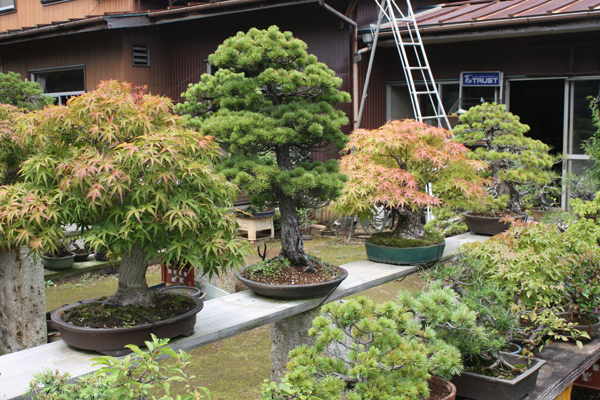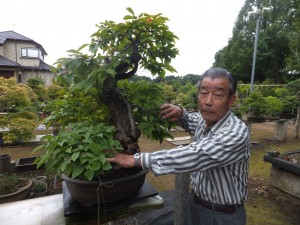The other day, a gentleman from Switzerland visited our place,” says Yasubumi Iimura, the founder of Kirakuen, a bonsai outlet in Angyo, Saitama Pref. “I was sort of curious as to what he, a foreigner, would point out and pick up, even though he was with a Japanese guide.”
Some might have thought of bonsai as a mere hobby but, when Mr. Iimura explains his robust refusal to sell one of his prized karin trees to the man for over a million yen, our interest was spiked.
Iimura started Bonsai as a business, but now he loves it as a culture. It seems that he would never sell some of these trees, even if someone put a million dollars in front of him. If you wonder what all the fuss is about – whether you want to buy (they can be picked up for as little as 1,000 yen) or just get a look for yourself – you should check out the the Bonsai and greenery Fair in Azabu Juban on the 8th and 9th of September.
The garden plant industry in Angyo, Kawaguchi – the birthplace of bonsai – has a 390-year history of continuous development.
Strategically located in Saitama, the area was historically a distribution centre of flowers and garden plants for many areas of neighboring Tokyo during the Edo period (1603-1867). Even today Angyo has a thriving scene for professional merchants as well as tourists.
The purpose of the art of bonsai is primarily to provide a focus for the contemplation of the viewer but of course also a pleasant, relaxing exercise for the grower. Iimura implores those starting out, and coming to the fair: “Please get strong trees, and please treat them in a traditional way.”
The Azabu Juban Bonsai and Greenery Fair takes place on September 8th and 9th, 2012 from 11 a.m. to 5 p.m.
At the event, taking place at Patio Juban, there will be a bonsai exhibition, over 2,400 items of various bonsai and garden plants on sale, bonsai and gardening demonstrations and gardening consultation.
Experience a tea ceremony while wearing kimono at Bonsai Museum











